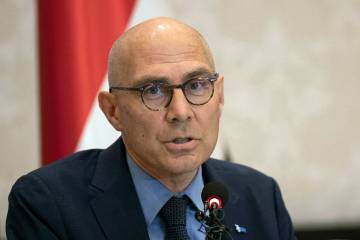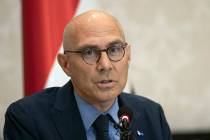How you can save $1,000 by not getting sick
“Getting sick is expensive,” said Dr. Rob Silverman. “The average adult gets sick with a cold or other minor illness about three times a year. Add up the lost wages, the various co-pays, and the cost of over-the-counter remedies, and it can easily come to over $1,000 a year.”
You might think a $1,000 bill for the common cold is outlandish. But when you look at the numbers, it’s actually surprising that the cost of getting sick isn’t higher. From flu shots to prescriptions, here’s how much getting sick costs you — and how much you could save by staying healthy.
1. Cost of Doctor Visits
Check-ups at the doctor’s office are important to staying healthy throughout the year, especially during flu season. However, if you get sick and have to return to the doctor more frequently, the cost of a doctor’s appointment starts to add up.
The average out-of-pocket cost per medical visit is $32, according to a study published by the American Journal of Managed Care. Based on CDC data, the average person goes to the doctor’s about three times a year, which would total $96.
But the $96 estimate is just the surface. On a deeper level, going to the doctor because you’re sick entails what is called opportunity cost: the value of work and productivity lost because you spent an estimated two hours trying to see the doctor.
The study published in the American Journal of Managed Care calculated that the average opportunity cost of a medical visit is about $43 — on top of the $32. Therefore, leaving out the cost of insurance premiums, the average trip to the doctor’s office totals $75, or $225 for the year, based on three visits. And that’s being conservative because including travel time and effort, the total cost per visit comes closer to $100, or $300 per year, according to Mike Catania, a consumer spending expert and co-founder of PromotionCode.org.
There is an emerging sector of the healthcare industry that could help you save on doctor’s visits. Telemedicine is providing a way to remotely and virtually visit physicians at lower costs and greater convenience to patients.
2. Cost of Prescriptions
Prescription drugs seem to be ubiquitous in the U.S., and that trend might continue. According to Milliman, prescription drugs are one of the most rapidly growing components of the MMI, the company’s index for medical costs.
In fact, the cost of prescription drugs add up to roughly 17 percent of total healthcare spending. In 2016, the MMI family’s prescription drug costs, based on a family of four, are almost four times as much as prescription drug expenditures were 15 years ago.
Prescriptions for specialty drugs have increased in recent years, and they tend to be more expensive than general medications. Still, prescribed medications such as antibiotics, prescription decongestant, steroid nasal spray and similar add up to an estimated $960 a year, said Dan Gay, president of Sinus Survival.
So if you stay healthy, averting the need to visit the doctor and pay for prescription medications, you could already potentially save over $1,200 in the year. But if you do need medication, experts say buying generic versions can save money.
3. Cost of Over-the-Counter Drugs
Managing to avoid the doctor and prescriptions doesn’t mean you’re out of the woods yet. According to data from Statista, retail sales of over-the-counter drugs totaled $32.1 billion in 2015.
Considering the adult population of the U.S. is just under 250 million, that means the average person spent roughly $130 per year on over-the-counter medication.
4. Cost of Missing Work
Missing a day at the office costs both you and your employer money. According to a report on the CDC’s website, the losses due to absenteeism are estimated to cost employers $1,685 per employee every year. In total, worker illness and injury costs U.S. employers $225.8 billion annually.
According to Bureau of Labor Statistics data, American workers get an average of eight paid sick leave days, across all establishments and length of service. The average hourly wage for all Americans, as of July 2016, is around $21 per hour, said Catania. By these numbers, missing eight days of work from illness adds up to losing out on more than $1,300 a year. But if you stay healthy and in the office, that’s another grand you save from not getting sick.
5. Cost of Presenteeism
If there’s a cost to missing work for being sick, there’s also a price for going to the office under-the-weather. Of the total cost sick workers inflict on employers, 60 percent of it is due to employees who go into work while sick. Presenteeism, the opposite of absenteeism, can hit employers hard in the wallet, costing them an estimated $150 billion per year, according to the Harvard Business Review.
Coming into the office when you’re ill undermines productivity in multiple ways. Working sick can result in:
Decreased work output;
Reduced time spent on work tasks;
Reduced quality of work;
Lower staff morale;
6. Cost of Going to the Hospital.
With no other recourse, you might end up going to the hospital if you get sick. The problem is that, even with insurance, hospital visits will cost you.
A recent study by JAMA Internal Medicine found that, despite the fact healthcare costs haven’t risen dramatically, out-of-pocket expenses have. Even with insurance, the study found that average out-of-pocket cost for a hospital visit was over $1,000.




























